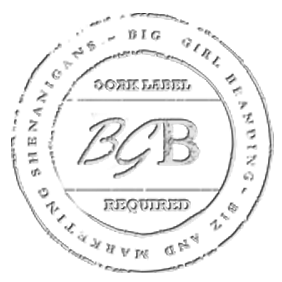This is a guest post courtesy of Danny Levin.
As a freelance writer myself with a voracious love of a good story, I thought it would be a great compliment to last weeks blog post.
As always feel free to drop any comments in the box below this post and if you celebrate it… Happy Early Turkey Day! 🙂
Whether you write books, marketing copy, or website content, telling a compelling story is central to your job.
Sometimes the elements of a good story feel like a mystery, but there are concrete steps you can take right now to improve your storytelling and capture the attention of readers.
Here are my top six tips for telling a better story.
Confront Something Difficult
A compelling story thrives on conflict, and that often means we need to confront the dark, difficult parts of life. Elizabeth Sims shares at Writers Digest,
“Most people shy away from darkness, but as an author you must be willing to dwell there, see it truly, explore it before you represent it.”
Your readers will know if you’re dodging the tough questions and issues. Confront them head on or your story may not ring true.
Cut What You Don’t Need
Taking your story to the next level means knowing what to cut and what to leave—especially if you have to delete a scene or a detail that you like.
Much like a task manager who knows what is needed to complete a project, a good story teller keeps readers focused on the essential details and ruthlessly cuts anything extraneous.
“Here’s the key: Put your best material in, but leave the kitchen sink in the kitchen. When tempted to throw in something awesome that the story doesn’t really demand, go ahead and write it, but during revisions take it out and save it.”
Tie Up Loose Ends
Readers trust writers to take them on a journey that will lead to a believable and satisfying resolution. Whether it’s a subplot or main plot, don’t leave your readers hanging, wondering what happened to your characters or in a certain situation.
David Baboulene shares with Joanna Penn that every story must address-
“key questions… need to be answered by the conclusion of the story.”
Conflict, action, and stirring dialogue can only take you so far in a story. You need to provide resolution to each thread you start.
Show Change and Development
At the heart of a story is the change and development of a person and/or place. Are you tracing the growth of a character or showing some kind of change throughout your story? If not, then there’s no reason for readers to stick around.
Elizabeth Richards at Suite 101 writes,
“The best and most interesting stories work because the people in them change and grow. The characters react from the conflict, either good or bad.”
Give Your Readers Hints
Part of telling a better story is hinting at deeper things that may or may not happen later on. Readers should have a sense of anticipation that will keep them scrolling down or flipping the pages. Foreshadowing is one tool that Larry Brooks recommends using:
“Foreshadowing is hinting, pure and simple.
It’s a promise that may or may not be kept. It’s the suggestion of tension and consequence, but without shape or form, delivered as detail, minutia or otherwise meaningless or distracting dialogue or action.”
Present a Unique Solution to the Conflict
Janice Hardy suggests that storytellers need to offer unique solutions to their stories. She writes,
“you can have your protagonist fail and still be able to find a way to resolve their problem and win.
And if they fail in one way, the reader can fear they might fail again. Things are interesting when you’re not sure what the outcome will be.”
Readers shouldn’t be able to predict the precise outcome of your story, though you should be equally careful to avoid pulling a solution out of thin air that is implausible.
Write Effective Endings
A story takes readers on a journey through some kind of change or growth, and Nancy Cress suggests at Writer’s Digest that you should ask yourself the following about your ending:
“Are any of the same symbols, motifs or images present in both? If so, how has their meaning expanded or changed by the end of the story?”
The ending of a story doesn’t necessarily have to be exciting or dramatic. A good ending helps readers understand the impact of the changes of the characters in the story and somehow refers back to the beginning of the story in order to show that the journey, at least for now, is complete.
Over to You
Didja find this post useful? Didja? Didja?! OK then. Please consider sharing it. 😉 And hey… tell us some tricks you’ve used to turn a good story great!

